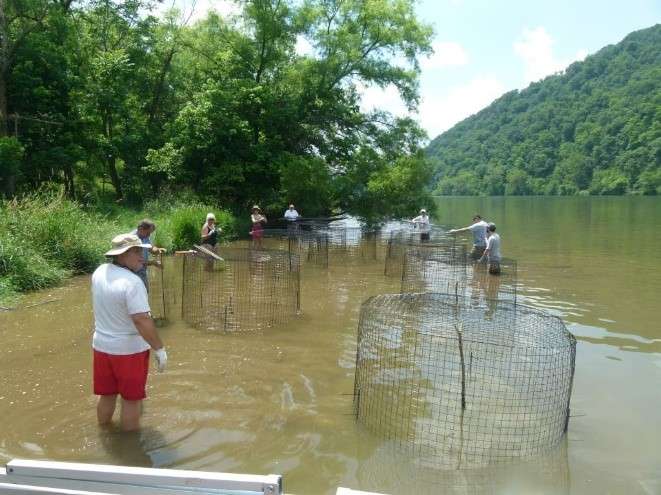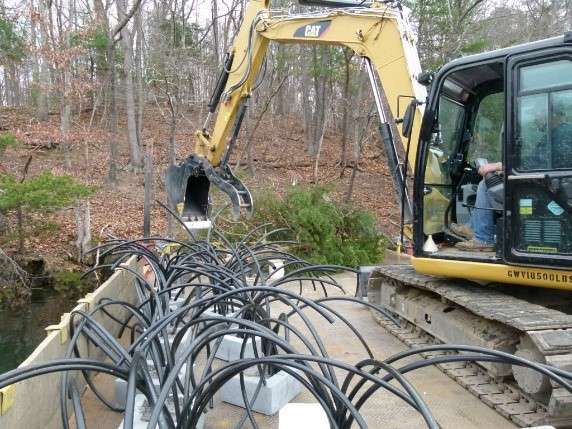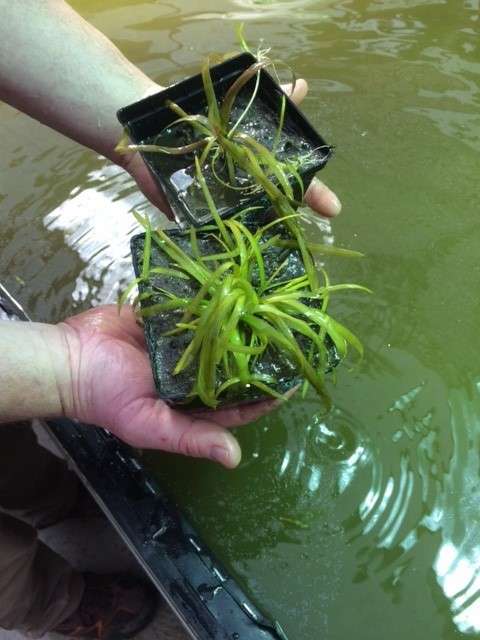
ROANOKE, Va. – Since 2013, Virginia’s Claytor Lake has seen massive and ongoing improvements in fish habitat, thanks to a broad alliance that includes the Virginia B.A.S.S. Nation (VBN) and Friends of Claytor Lake (FOCL), among others.
Most recently, VBN Conservation Director Joan Blankenship said that volunteer anglers will meet this fall to assemble Mossback Fish Habitat purchased with $5,000 provided by Appalachian Power, and then FOCL will place the cover, with assistance from John Copeland of Virginia Department of Game and Inland Fisheries.
“Without his help and the help of FOCL, none of this would be possible,” said Blankenship. “The Claytor Lake project is a good example of the majority of stakeholders all working together to keep an ecosystem balanced and healthy.
“The grants that have been awarded to Virginia B.A.S.S. Nation have allowed me to fund several habitat improvement projects. Also, Virginia Electric and Power Company has provided generous additional funding.”
For B.A.S.S. volunteers, the most challenging aspect of the long-term project has been growing water celery, also known as eel grass, to plant in the 4,500-acre impoundment surrounded by Claytor Lake State Park in southwestern Virginia.

“Due to the focus on ensuring that we do not spread invasive plants or animals, I had to find a way to grow the grass from seed,” Blankenship said. Fortunately, Blanche Blanchette with the Chesapeake Bay Foundation provided 100 seeds to start the work in 2016, with assistance from Patrick Henry Community College and a grant from Friends of Reservoirs.
Pulaski County High School in Dublin help grow a second crop, with monetary assistance provided by a B.A.S.S. Nation grant from the Aquatic Ecosystem Restoration Foundation and Aquatic Plant Management Society.
“The plants have to be caged (to prevent fish and turtles from browsing on them) when we put them in the lake and the project that provided most of the cages was funded by a grant from Shimano/B.A.S.S. Youth Conservation Initiative,” Blankenship said, adding that students from the Patrick Henry fishing team assembled the enclosures.
Also in 2016, high school and college students from all over the state converged on Claytor to help place shoreline habitat for bank fishermen, with Mossback and Applachian key donors for the three-day operation that was conducted in the rain. “Friends of Claytor Lake provided the boats and the barge to launch the habitat and the students assembled everything,” the conservation director said.
Other highlights of the Claytor Lake project include the following:
- 2013 – Spider blocks and artificial Honey Hole Fish Attractors created around fishing pier at Harry DeHaven Park and in Peak Creek. Also, felled trees cut and cabled in creek.
- 2014 – FOCL purchased and planted water willow and water celery from North Carolina. FOCL, B.A.S.S., VDGIF and others formed Angler Committee to deal with habitat, native vegetation, invasives, and other issues.
- 2015 – More than 400 tons of repurposed concrete and clean erosion stone used to create reef habitat in seven locations. Project earned Berkley Conservation Award. More water willows planted. First “Bass for Grass” fishing tournament staged to raise funds for more plants.
- 2016 – More reefs built with 250 tons of concrete. Trees cut and cabled at 10 locations. Water willows planted in upper and lower lake. Funding included AERF/APMS conservation grant. Second tournament held.
- 2017 – Assisted VDGIF with Recycled Christmas Tree Project. Grew 200+ water celery plants at Pulaski High School in cooperation with the Agriculture Program using a grant from Virginia B.A.S.S. Nation. Planted and caged these plants in two locations in the lower lake in cooperation with VDGIF.






